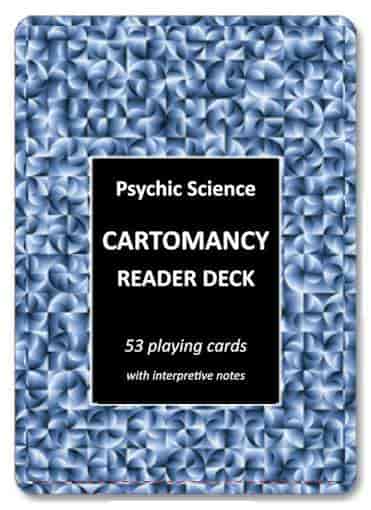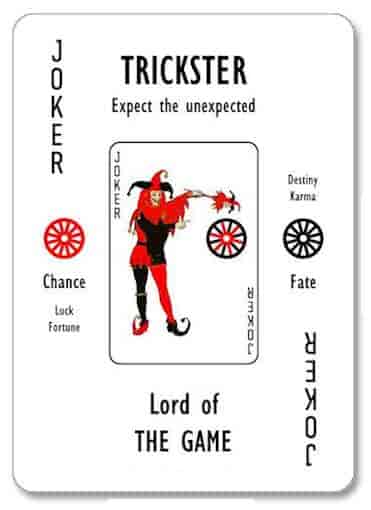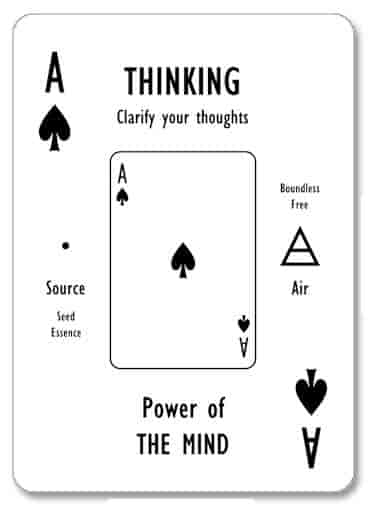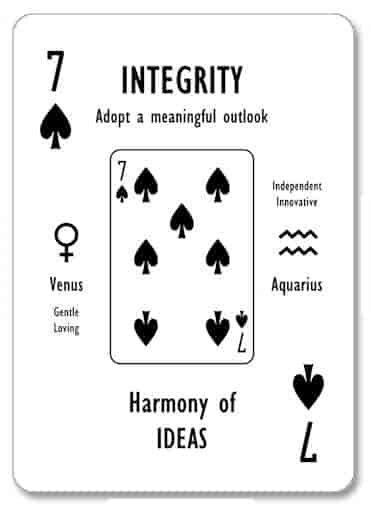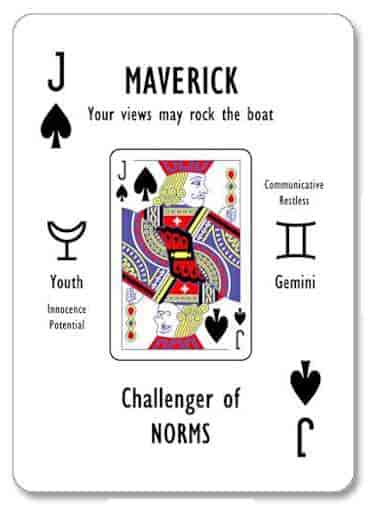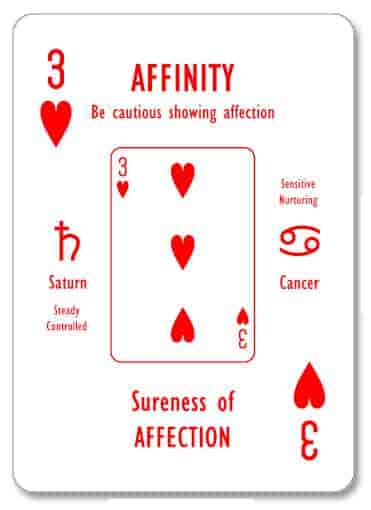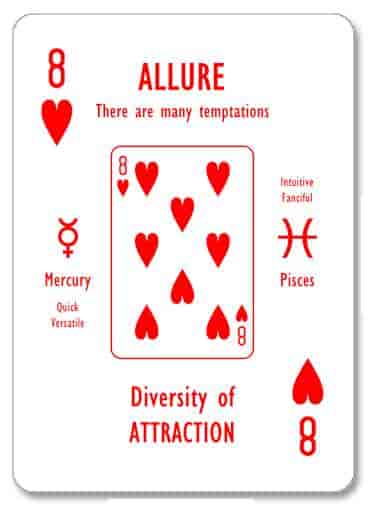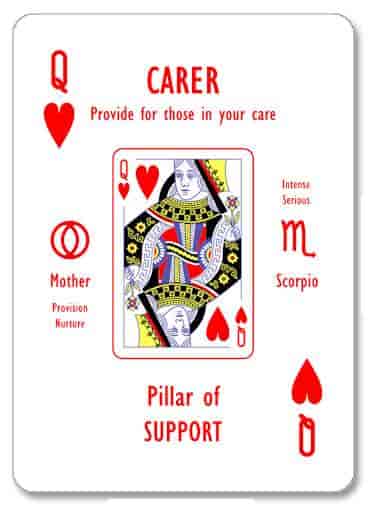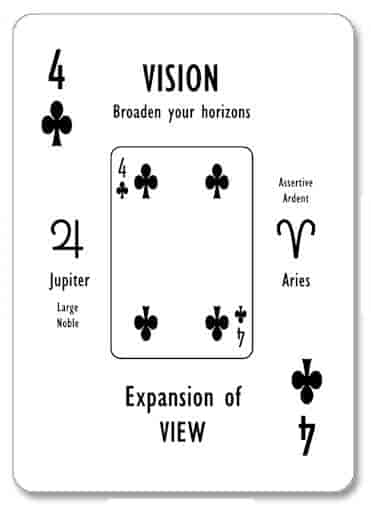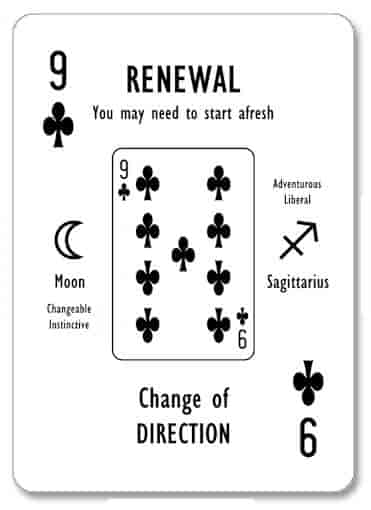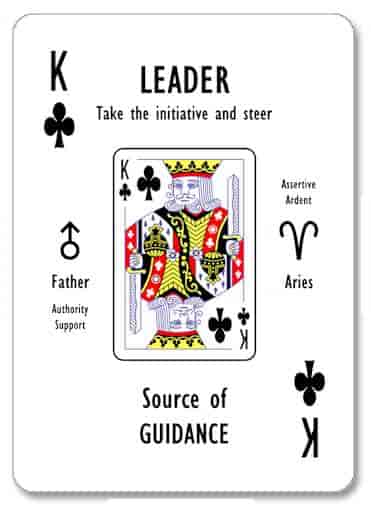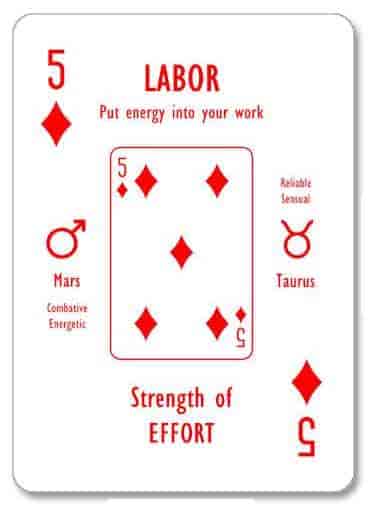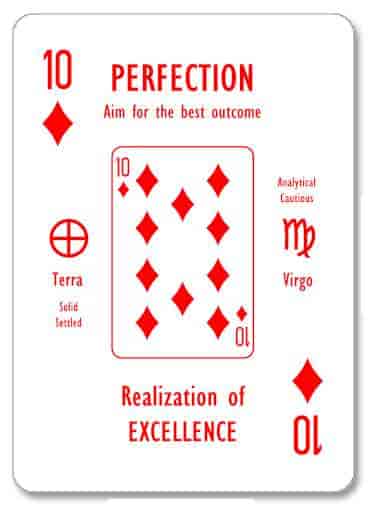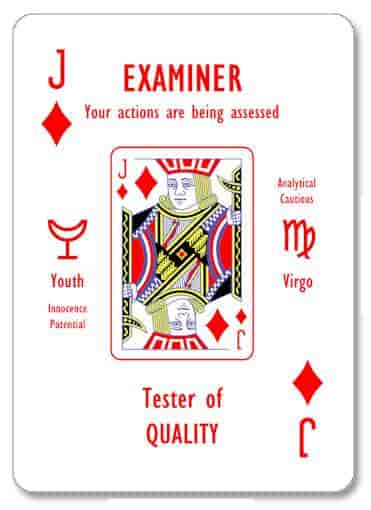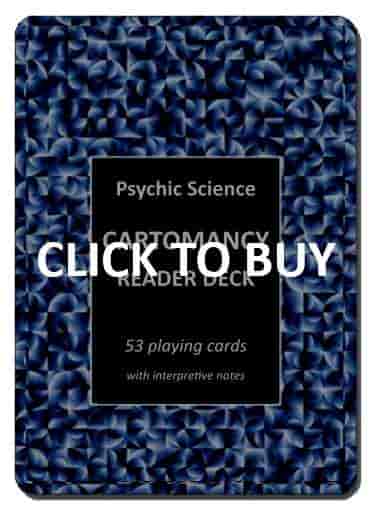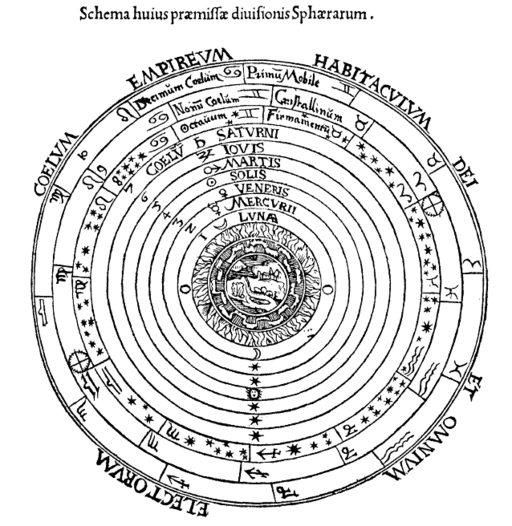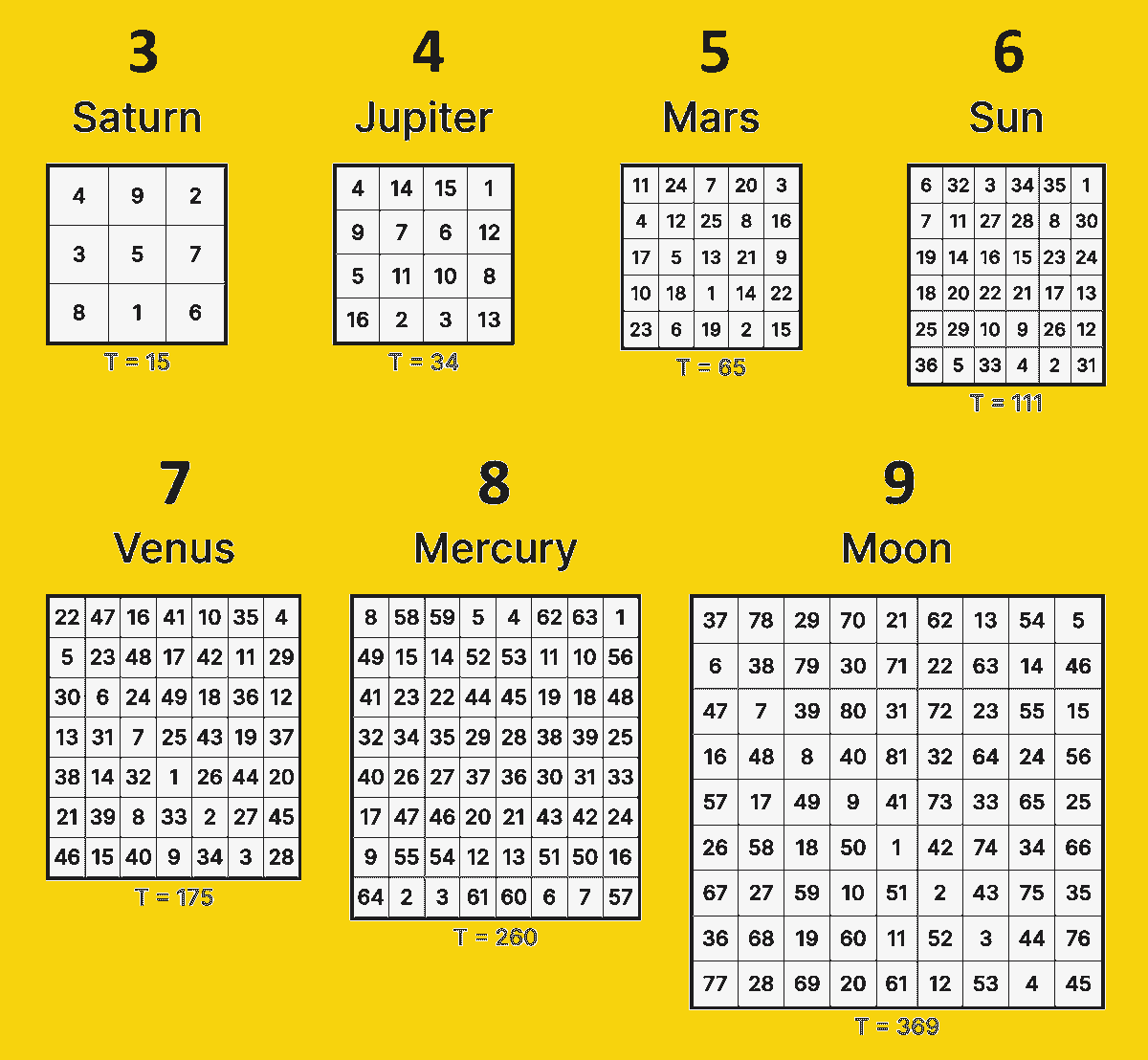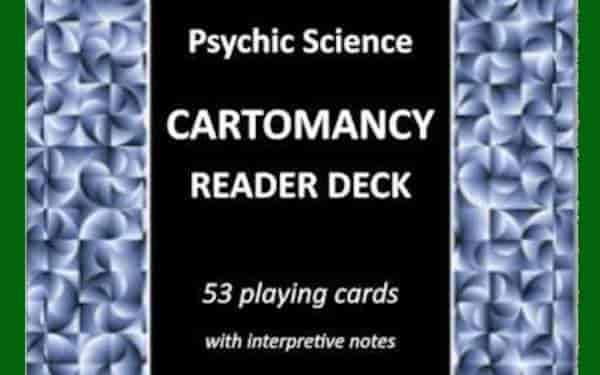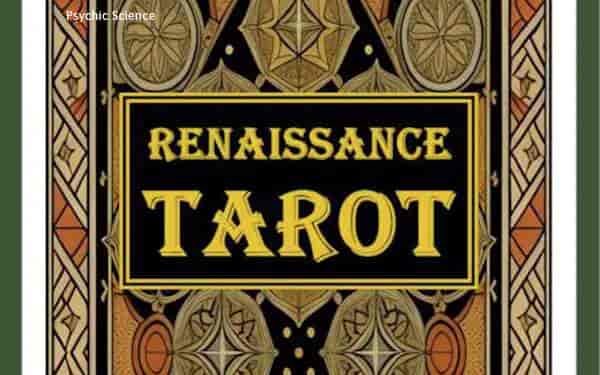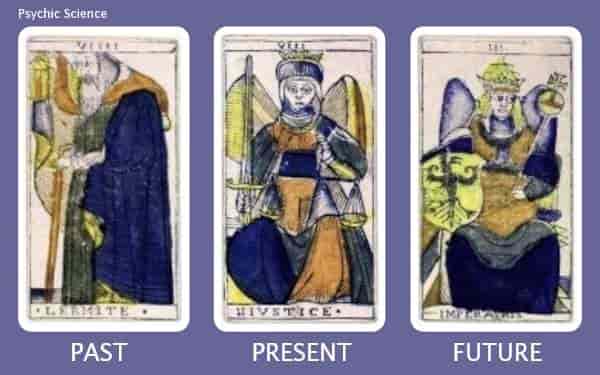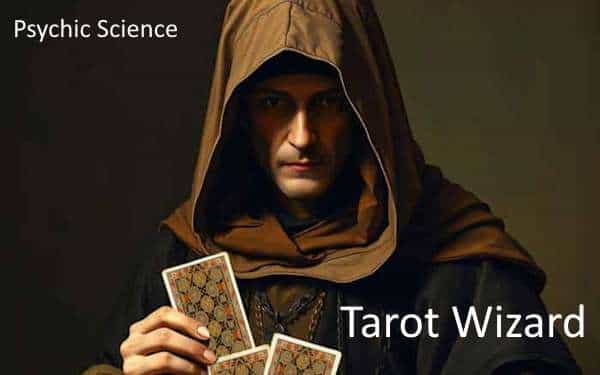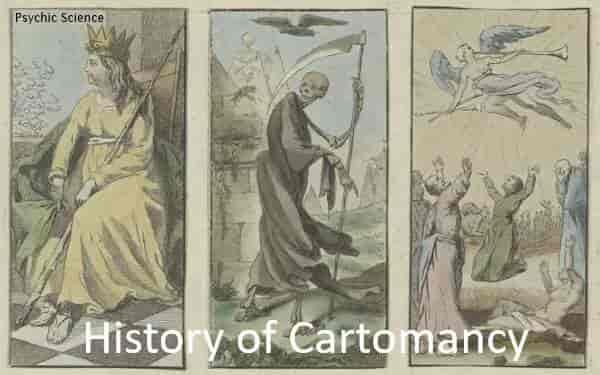
Cartomancy
Reader Deck
About our exclusive divination cards
Cartomancy with Playing Cards
Evidence suggests that playing cards were used for fortune-telling long before tarot cards were invented. While playing cards may be visually less attractive than tarot cards, and appeal less to our sense of the mysterious or exotic, they have the advantages of familiarity and ready availability. For many people, they can be an ideal way to learn and practice divination and psychic reading. More generally, they can also be used as a tool for self-exploration and self-discovery.
There are many popular books on cartomancy with playing cards. You will also find much on the Internet, though the quality of this can vary. Because a normal deck of cards is being used, most of the methods taught in this way require memorizing the specific interpretations of each card. Alternatively, you will need to look up this information in the book or webpage during the consultation.
The Cartomancy Reader Deck
The Psychic Science Cartomancy Reader Deck has been specially designed as a self-contained tool in which the necessary information is included on the cards themselves. Very little or no memory work is required, and you do not need to look anywhere else to obtain the guidance you seek.
If you practice regularly with the Reader Deck, you will most likely find that you remember or can deduce each card's attributions, so that it then becomes possible to use any deck. This learning process is itself greatly facilitated by the Reader Deck's essentially simple and logical structure, which is based on traditional numerological and astrological principles.
The Suits
The Cartomancy Reader Deck assigns the four suits to the four classical elements of the Ancient Greeks.
SUITS & ELEMENTS
| SUIT | ELEMENT |
| CLUBS | FIRE |
| HEARTS | WATER |
| SPADES | AIR |
| DIAMONDS | EARTH |
The significance of these attributions for tarot interpretation is that each element is traditionally associated with different aspects of human experience. The elements are also directly correlated with the four functions of consciousness recognized in C.G. Jung's theory of psychological types.
ELEMENTS & ASSOCIATIONS
| ELEMENT | JUNG | KEYWORD | MEANING |
| FIRE | INTUITION | WILL | Purpose, Intention, Drive |
| WATER | FEELING | HEART | Emotions, Sentiments, Attachments |
| AIR | THINKING | HEAD | Mind, Intellect, Rationality |
| EARTH | SENSATION | BODY | Senses, Physicality, Material needs |
The Pip Cards
The ten numbered cards in each suit represent different aspects of the corresponding elemental principle, or different ways in which the energy of that element is expressed.
These aspects or energies reflect the esoteric meanings traditionally attached to the ten numbers, which remain essentially the same for each suit. The number system used in the Renaissance Tarot derives from astrological, Kabbalistic, Neoplatonic, and related ideas found in 15th and 16th century Renaissance Magic. It is no coincidence that this was the very period when the tarot was spreading throughout Europe.
In this system, the ten numbers correspond to qualities associated with the classical planets (including Sun and Moon) and related astrological concepts.
ASTROLOGICAL NUMEROLOGY
| # | IMAGE | KEYWORD | MEANING |
| 1 | SOURCE | POWER | Seed, Essence |
| 2 | SKY | EMERGENCE | Appearance, Unveiling |
| 3 | SATURN | SURENESS | Steady, Controlled |
| 4 | JUPITER | EXPANSION | Large, Noble |
| 5 | MARS | STRENGTH | Combative, Energetic |
| 6 | SUN | VITALITY | Radiant, Optimistic |
| 7 | VENUS | HARMONY | Gentle, Loving |
| 8 | MERCURY | DIVERSITY | Quick, Versatile |
| 9 | MOON | CHANGE | Changeable, Instinctive |
| 10 | TERRA (Earth) |
REALIZATION | Solid, Settled |
The assignment of Sun, Moon and planets in this system is not abitrary, but directly reflects the relative speeds at which the planets move through the zodiac signs, as viewed from Earth (Saturn being the slowest, Moon the fastest, and Sun midway). This was the basis for the geocentric model of the celestial spheres developed by Ptolemy (c. 100 – c. 170 CE) and famously illustrated by Peter Apian in his 1524 book Cosmographia.
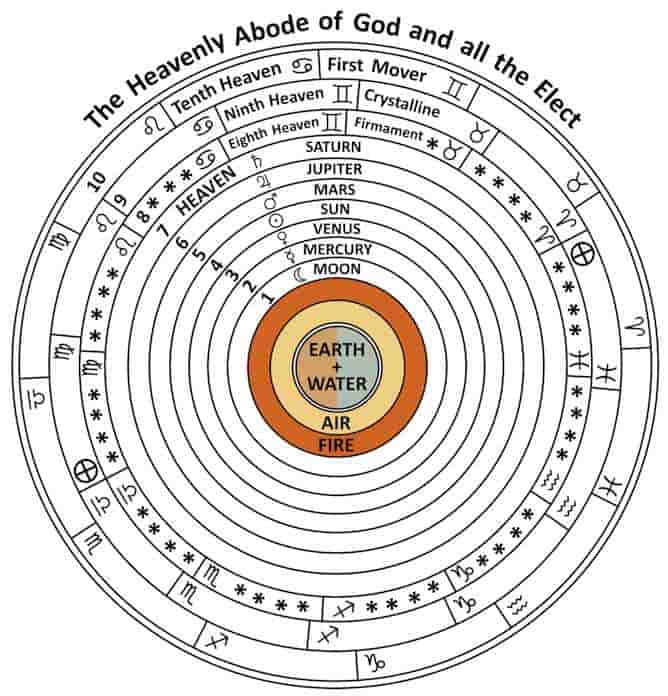
The numerical sequence (3-9) of the classical planets also corresponds directly with those in the series of planetary magic squares constructed by the Renaissance scholar and occultist Heinrich Cornelius Agrippa (1486-1535) whose highly influential Three Books Concerning Occult Philosophy were published in 1531 and 1533.
The Court Cards
In the Reader Deck, the three Court Cards in each suit represent expressions of three archetypal social roles - Father, Mother, and Youth (Child).
It is important to note that these roles can be adopted by anyone, irrespective of gender and age. The King, Queen and Jack do not, therefore, only apply to (or necessarily imply) a male or female person, or to someone who is older or younger.
In some cartomancy spreads, one of the court cards (called the Significator) is removed from the deck at the beginning of the reading and placed face-up on the table. The Significator card is chosen based on the inquirer's personality, current role or situation.
THE COURT CARDS
| CARD | ARCHETYPE | MEANING |
| KING | FATHER | Authority, Support |
| QUEEN | MOTHER | Provision, Nurture |
| JACK | YOUTH (CHILD) | Innocence, Potential |
Suits and Signs
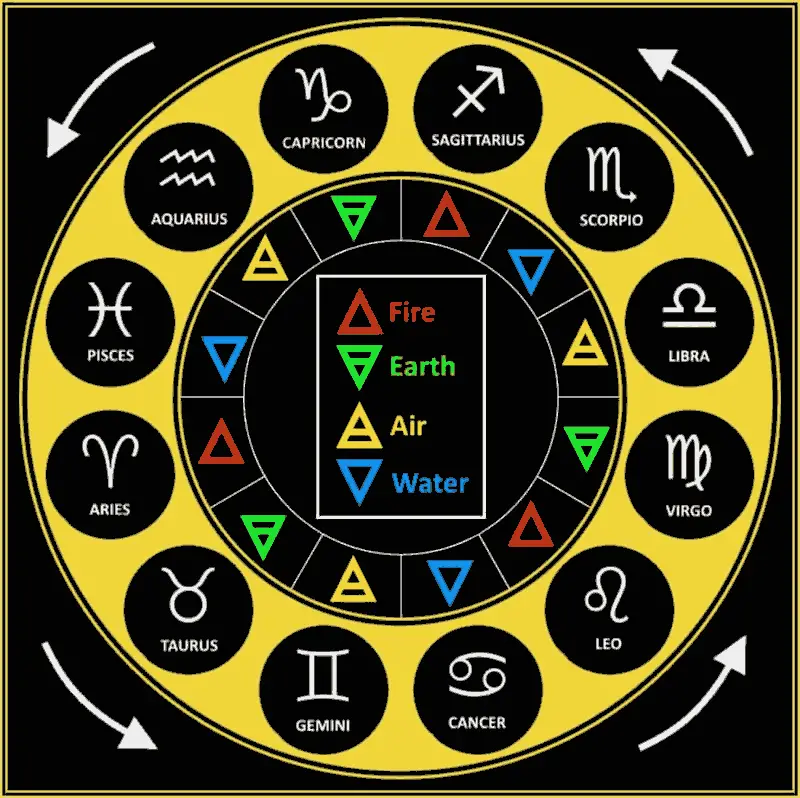
The meaning that is attributed to each card depends not only on its numerical value or courtly role, but also on its suit and associated element.
In the Reader Deck, the FOUR ACES represent the primary influence of the corresponding ELEMENTS. The remaining cards reflect principles that are represented by the ZODIAC SIGNS.
In traditional western astrology, each zodiac sign is associated with both an ELEMENT and QUALITY.
The ELEMENT for each zodiac sign is determined by the sequence Fire-Earth-Air-Water. This cycle repeats throughout the year, beginning with Aries (Fire) at the beginning of Spring, and ending with Pisces (Water) at the end of Winter.
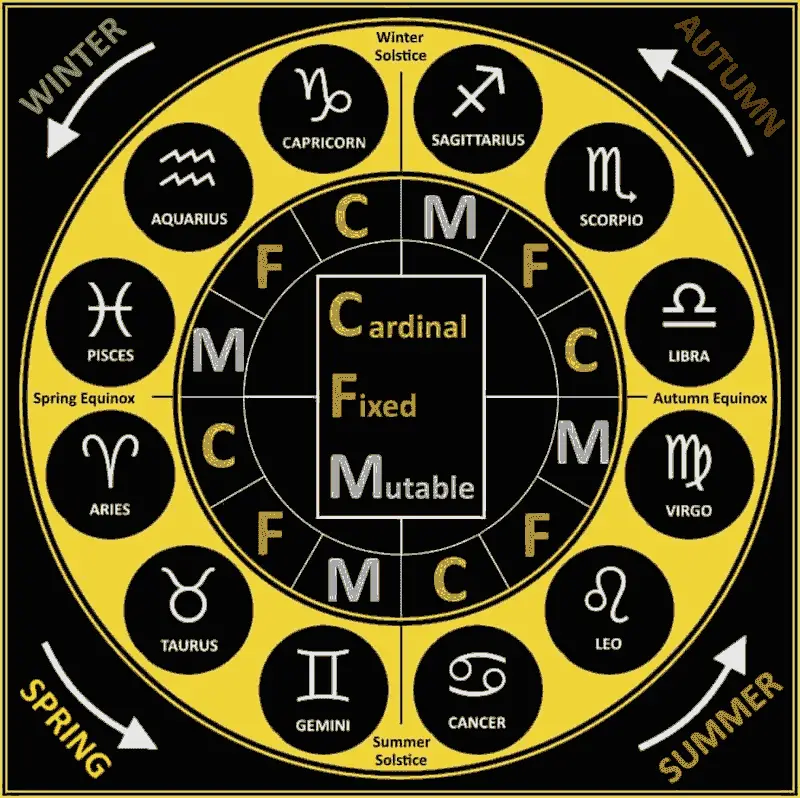
The QUALITY of a sign reflects its position in the seasonal cycle and represents the developmental or gestatory role it plays within its season. Three qualities are traditionally recognized - Cardinal, Fixed, and Mutable. Cardinal signs are the creative initiators (at the beginning of a season). Fixed signs (in the middle of a season) provide a stable environment and foster maturation. Mutable signs (at the end of a season) shake things up and facilitate transformation to the following season.
In the teachings of The Hermetic Order of the Golden Dawn, the Zodiac Signs are attributed to the tarot's NUMBER CARDS (2 - 10), in groups of three, based on the suit's ELEMENT and a sequence in which the group's QUALITY changes from Cardinal, to Fixed, to Mutable. The Cartomancy Reader Deck has adopted the Golden Dawn attributions as these apply to the corresponding playing card suits (Batons = Clubs, Cups = Hearts, Swords = Spades, Coins = Diamonds).
For the COURT CARDS, the Reader Deck departs from the complex Golden Dawn astrological attributions. Instead, a simpler arrangement is adopted in which the Kings represent a Cardinal influence, Queens represent Fixed, and Jacks represent Mutable.
Combining the elements and qualities, we obtain the following zodiacal structure of the Reader Deck.
| CARD | TRAITS | SIGN | MEANING |
| ACE CLUBS |
ALL FIRE |
FIRE SIGNS |
Fervent, Vigorous |
| 2, 3, 4, K CLUBS |
CARDINAL FIRE |
ARIES | Assertive, Ardent |
| 5, 6, 7, Q CLUBS |
FIXED FIRE |
LEO | Creative, Dramatic |
| 8, 9, 10, J CLUBS |
MUTABLE FIRE |
SAGITTARIUS | Adventurous, Liberal |
| ACE HEARTS |
ALL WATER |
WATER SIGNS |
Fluid, Yielding |
| 2, 3, 4, K HEARTS |
CARDINAL WATER |
CANCER | Sensitive, Nurturing |
| 5, 6, 7, Q HEARTS |
FIXED WATER |
SCORPIO | Intense, Serious |
| 8, 9, 10, J HEARTS |
MUTABLE WATER |
PISCES | Intuitive, Fanciful |
| ACE SPADES |
ALL AIR |
AIR SIGNS |
Boundless, Free |
| 2, 3, 4, K SPADES |
CARDINAL AIR |
LIBRA | Balanced, Strategic |
| 5, 6, 7, Q SPADES |
FIXED AIR |
AQUARIUS | Independent, Innovative |
| 8, 9, 10, J SPADES |
MUTABLE AIR |
GEMINI | Communicative, Restless |
| ACE DIAMONDS |
ALL EARTH |
EARTH SIGNS |
Solid, Sturdy |
| 2, 3, 4, K DIAMONDS |
CARDINAL EARTH |
CAPRICORN | Pragmatic, Disciplined |
| 5, 6, 7, Q DIAMONDS |
FIXED EARTH |
TAURUS | Reliable, Sensual |
| 8, 9, 10, J DIAMONDS |
MUTABLE EARTH |
VIRGO | Analytical, Cautious |
Interpreting the Cards
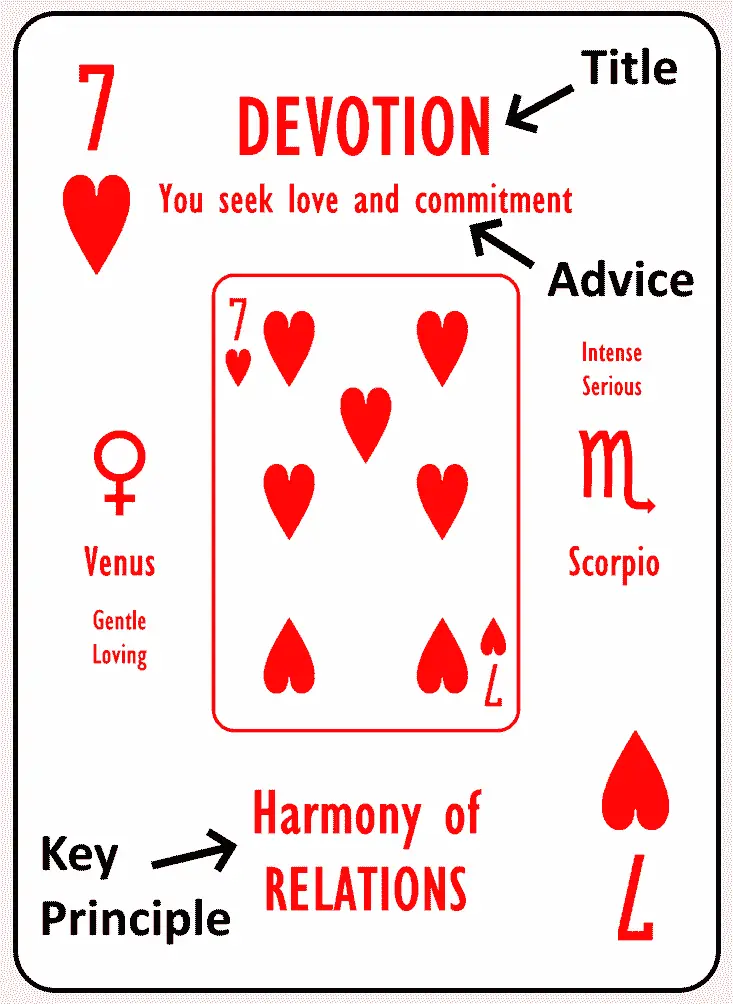
The oracular meaning of each of the 52 suited cards derives from the way in which its specific astrological meaning (for pip cards) or role (for court cards) is expressed or manifested in its suit and sign. For example, the SEVEN OF HEARTS represents the SEVEN (VENUSIAN) principle of Harmony (Gentle, Loving) as expressed in HEARTS (Emotions, Sentiments, Attachments) and manifested in a SCORPIONIC way (Intense, Serious).
In the Reader Deck, these interactions are reflected in the Title, Key Principle, and succinct Oracular Reading (or Advice) printed on each card. For example, the SEVEN OF HEARTS is titled 'DEVOTION,' its Key Principle is 'Harmony of RELATIONS,' and its suggested oracular meaning is 'You seek love and commitment.'
Some cartomancers like to interpret cards differently if they appear upside down in a reading. A reversed card is generally understood to indicate the opposite of its upright meaning, or a more unfortunate aspect of its expression. For example, if the SEVEN OF CUPS is reversed, this could indicate a lack of love or commitment.
Note that because all the relevant information appears on the card, you do not need to commit the theoretical and structural explanations to memory, greatly simplifying the reading process.
The Joker
Finally, we need to consider the Joker. This card was a 19th century addition to the playing card deck, introduced specifically for use in certain card games. The Joker can, however, have an important role to play in cartomancy, where it is often compared to the tarot's unnumbered trump card 'The Fool'.
In the Reader Deck, the Joker represents the Trickster archetype and the twin principles of CHANCE (Luck, Fortune) and FATE (Destiny, Karma). In practice, it indicates an unexpected, seemingly random influence on affairs, although one that may be the inevitable consequence of previous actions.
